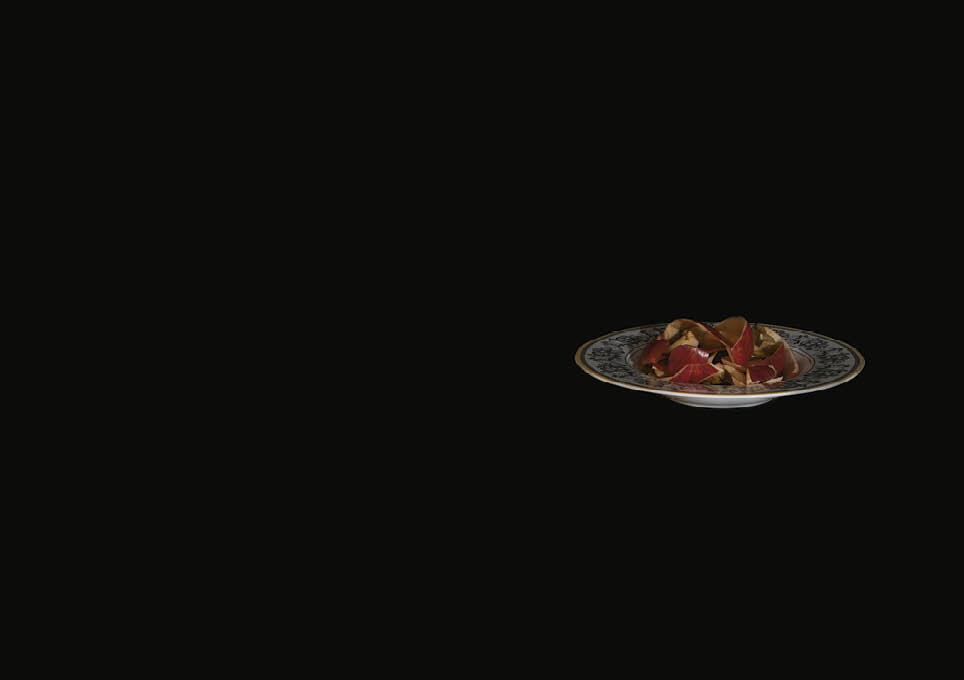Materia Oscura, 2018-2019


















Materia Oscura presents a projection of the future of humans as a dominant species in the natural order. The duality between humankind and technology, the concept of impermanence and the omnipresence of the tone of black are the three components of the project.
Inspired by an imaginary Wunderkammer; creatures, objects, scenes and architecture portray the transition between a world dominated by Nature (and where Man is the main protagonist) towards a New Era - both technological and abstract - whose understanding eludes us.
The result is a personalised atlas, an echo of the work of Aby Warburg, where the images portrayed interrelate to create their own language, a discursive line that crosses the force of Nature, Anthropocentrism and finally, technology, leading to a cartography that must be completed by the viewer. This process of possibilities - seemingly open and infinite - creates meaning through associations and relationships, across different time-horizons and spaces.
Materia Oscura (Dark Matter in English) – the unknown agent that constitutes the majority of the universe – is referenced by using black colour and abstract images, an invitation to the viewer to enter a new space; to open the door of imagination.
The visual style, inspired by the Italian and Spanish baroque masters, relies on chiaroscuro to emphasise the aesthetic element. Contrasting light and shadow to find poetry in the organic landscapes that form in the porous rock of a cave or in the architectures generated by technological processes, in a style that highlights the three-dimensional value of these subjects and their tactile value, to activate the senses of the viewer.
The symbology that runs through the series plays a very important role. Many of the scenes pictured lead us towards a reflection on mortality and the ephemeral and delicate fragility of human existence. If the observer completes an object beyond appearances, they will discover its mystery, like the uncomfortable darkness of the interiors of the refrigerators used in the morgue. For this reason, the interpretation of the images is willingly kept completely open. For instance, the image of the butterfly could refer to the wondering of the human mind (the ancient Greek name for the butterfly is psyche), but it can also be a reference to the butterfly effect, the physical law in which minimal changes to the inputs of complex systems greatly affect the final outcome.
Materia Oscura is a text dense with signs and revelations, spaces that cross past, present and future to present a transfiguration of humankind, through a journey that explores the hierarchical changes in the history of humanity.
A project where viewers are invited to create associations, find semantics of continuity, of belonging or similarity and thus establish their own cartography, their own reflection on the mystery of being alive.
Elvira Rilova
Elvira Rilova is a cultural manager and independent curator, she studied Art History at the Universities of Valladolid and Roma Tre (Italy) and has a Master in Events Organisation from the Complutense University of Madrid. As curator she has organized exhibitions in Italy, Mexico, Portugal and Spain and has worked as a cultural manager within various institutions, foundations and museums. curatorial and cultural management projects between Spain and Mexico. She currently directs the consultant Accelerator of artists and since 2015 she is the Director of the Artist Book Fair of Castille and León, Librarte.
The portfolio is comprised by an artist book and a limited edition of prints available for acquisition and exhibition.
Artist Book
An artist book has been published in an edition of 100 copies + 15 artist proofs, each copy individually numbered and signed by the author. In 2018, 50 copies were made available for acquisition.
The artist book Materia Oscura has been shortlisted for the Kassel Dummy Awards in 2019 and the Photobook Festival in Athens 2019.
All rights reserved 2007-2019

